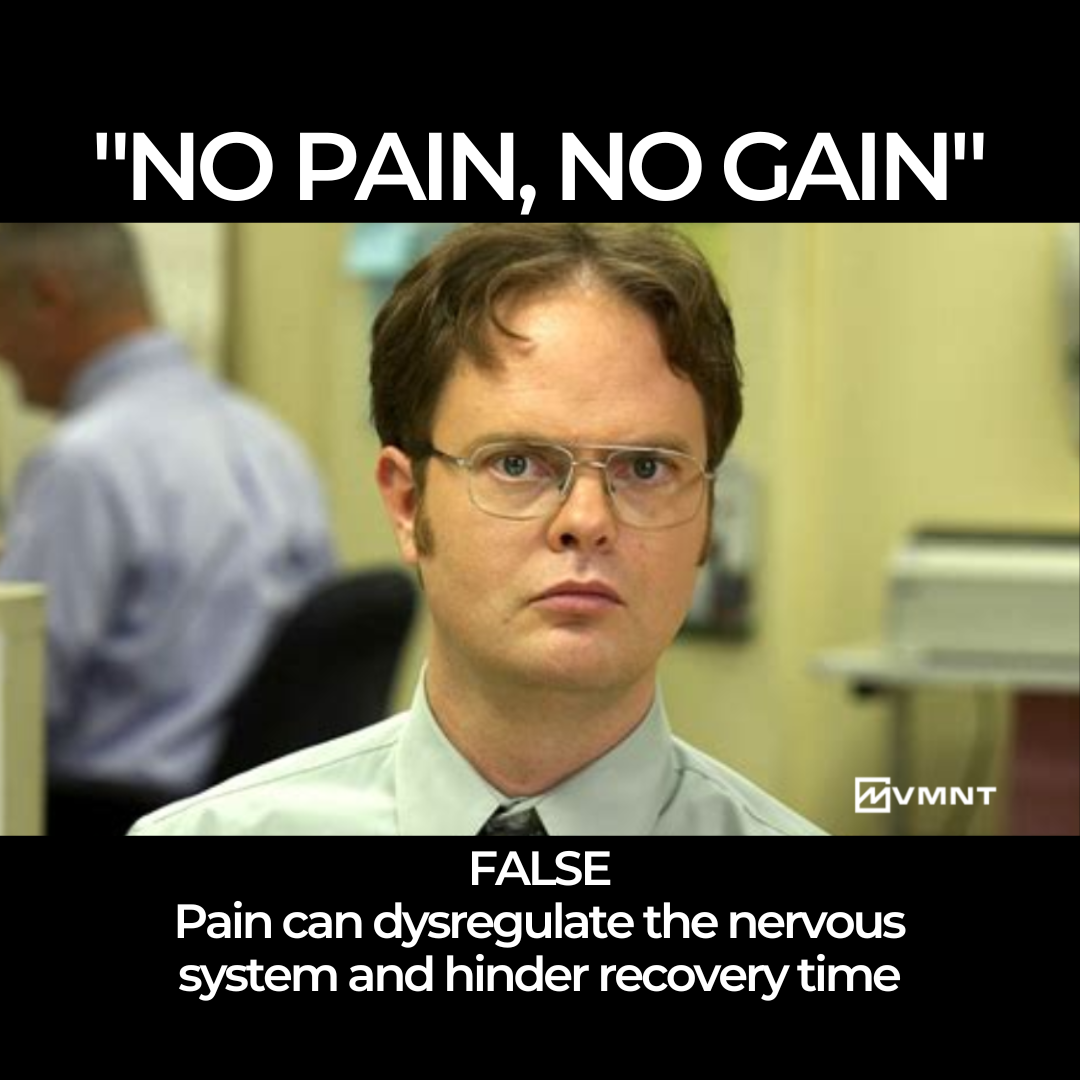The Difference Between Pain And Discomfort
The Shocking Scecrets Surrendered!
I’m part of the lululemon Creator Network and will receive a commission if you make a purchase through the links below.
Have you ever felt discomfort while stretching? What about pain? Do you know how to distinguish between the two? If not, or if you simply want to learn more about stretching, please stay tuned.
I find there are a lot of misconceptions in the fitness industry surrounding stretching. We think the only way we get a "good" stretch is if we feel intense discomfort. To be blunt, the "no pain, no gain" mentality is not conducive to stretching and wellness. We must listen to our bodies as they are the best information messengers. If you're not used to listening to your body and are unsure where to start, I am here for you!
Anytime we stretch our muscles, we take our tissues and expand them to some degree. If you regularly feel discomfort, you are not alone! While there are some sensations to watch for, it is entirely typical (and expected) to experience some unpleasantness while mobilizing our body.
Perhaps you are wondering, how do I tell the difference between pain and discomfort when stretching? I hope to shed some light on this and much more in today's blog.
You Feel Discomfort, But What Is Really Happening?
Within our muscle fibres, we have these fancy things called "muscle spindles." Before clicking out of the blog because it's too "sciency," stick with me! A muscle spindle is a delicate sensory receptor located within our muscle tissue. Fun fact: almost every muscle contains muscle spindles(1).
Think of a muscle spindle as a communication centre or “dispatch.” Our muscles work hard on the ground and send near-constant messages to the spindles, who relay their findings to our central nervous system (our spinal cord and brain). When the message is received by our CNS, an informed decision to take action is made.
Movements we can perform unconsciously, such as walking or bending, are all thanks to the tireless work of muscle spindles and their nifty communication skills. When we stretch our tissue, our spindles act to let our CNS know this is happening. If we lead sedentary lifestyles and don't move too often, our muscle spindles will become hypersensitized to movement and quickly send exaggerated messages to our CNS. This is partly responsible for the intense sensation we feel when we move after being still for a long time (I.e. car rides, plane trips, sleep, etc.).
When we stretch our muscles to their end range, the muscle spindles will yield and let go. This is responsible for the feeling of release that can happen when we hold a passive stretch for long enough. It's important to note that if we stretch too deep, too fast, our CNS will get in the way of the spindles releasing. This is why starting slow and gradually leaning into a stretch is crucial. A muscle spindle takes roughly two minutes to let go. Suppose we rush into a posture and experience a deep sensation rapidly. We will most likely be overwhelmed by the intense feeling, causing us to move from the stretch before the spindles release.
One last note: when we stretch regularly, our muscle spindles desensitize. When they are less sensitive to movement, our CNS is as well! Have you ever noticed your stretch tolerance increase dramatically when you keep a regular mobility routine? This is thanks to the process of desensitizing your muscle spindles. It's their way of saying, "Thank you for caring about me every day. I'm much less wound up and will scare less easily now."
Stretching Is Meant To Be Uncomfortable
As discussed in the previous paragraphs, stretching causes our tissues to pull apart slightly. Therefore, discomfort is bound to be present with any form of extension.
Having said that, I want to stress the importance of keeping the sensations within our window of tolerance. A good range of feeling to aim for is roughly a 5/10 in intensity. You're aware your muscle is being stretched. It may feel moderately intense, but you can focus on your breathing and keep things slow, light and breezy. The moment you start to sweat, shake or hold your breath is the moment to back the eff off. Apologize to your muscles for pushing them a bit too far, and try easing in again.
I want to emphasize that pushing ourselves to a level greater than an 8/10 in intensity will cause damage. Not only does this cause damage to our muscles, but our nervous systems as well. When we push ourselves to the point of pain in stretching, our nervous system will associate that particular stretch (or stretching in general) with stress. Our sympathetic nervous system will take over, and we can say "farewell" to the peace and calm that mindful stretching is meant to bring. Our bodies will remember and associate stretching with danger. This is a delicate relationship that we don't want to risk damaging. We are way too magical and lovely for that.
The Secret To The Sensations
"OK Crystal, we understand what is happening when we stretch and we know not to push things too far. But we feel things… scary things… in our bodies. What do the different sensations mean?"
Thank you so much for asking. Allow me to explain.
When stretching within our tolerance window, it is normal to feel a dull, achy sensation. Burning may happen with this as well. Think slow, molasses-like feelings that are gradual and not too unpleasant. If we push ourselves to the point of pain, we can expect to feel sharp, stabbing or shooting sensations. It is our body saying, "HEY! BACK OFF!" And if we want to improve our relationship with ourselves without causing damage, we will listen.
Experiencing pain does not mean we should immediately throw in the towel and deem said overstretched body part as "damaged." It simply means we try again with less intensity. Decrease the range of motion, take a modification or use props! When practicing with me on the MVMNT app, I frequently provide alternate ways to move if you find a particular stretch is not serving you. Our bodies are beautiful and unique; stretching is by no means a "one size fits all" type of thing.
Another familiar sensation I wish to touch on (pun intended) is the not-so-nice "pins and needles" feeling. Numbness and tingling mean our nerves are speaking to us. We must be careful with nerves; they're testy little creatures sometimes. That being said, they are effective communicators. You know when you've "struck a nerve" (another pun, I'm killing it) relatively quickly. As soon as you feel these sensations, come out of the stretch. Give a gentle shake, caress or rub to the body part, take a breath, and gently ease back into the movement. If the tingling keeps happening, try modifying your pose, and let your nerves have the freedom they desire.
Remember, the sensation we are looking for when stretching is a slow, deep, burny type of feeling. Picture a quiet, dimly lit room with a soft candle flickering. Ah, so nice. That's what I'm talking about.
The Shocking Power Of Our Thoughts
Yes, we will discuss our self-talk in the upcoming paragraphs. You had to know this was going to come up at some point. There is no way I couldn't bring it up again; it's just too ding dang important!
Self-Talk is the most important conversation of your life. -Jesus Apolinaris
The power of our thoughts and self-talk is absolutely crucial. What we are saying while stretching can hugely impact our results and (way more importantly) our enjoyment of the mobility process.
Pay attention the next time you are stretching. If the circling thoughts are along the lines of:
"This hurts so much."
"I hate this."
"I could be doing (insert endless task list here)."
It's no wonder you have a hard time getting to your mat. Honestly, if I thought about those things while stretching, it would be a miracle that I made it off of my couch.
My advice: less talking, more noticing. Step into the role of the observer and watch the thoughts that want to grab your attention. See them. Hey, even shake their hand and give them a "how do ya do" and then let them continue on their way. Consider adding in some helpful observations to partner with your mobility. Acknowledge that you indeed feel a deep, burning sensation and leave it there. Simply feel your sensations, leave the thoughts at the door, and tune into your body.
This is a massive part of why we feel a sense of calm after mindfully stretching. We give our thinking, busy minds a break and allow ourselves to be with our bodies. It is beautiful, and a MVMNT routine can help you achieve that. I consistently remind viewers of my videos to come back to their breath, observe the sensations they feel, and be.
When In Doubt, Modify It Out!
There is no room for heroes on our yoga mats. Pride and ego are something that should be left at the door. I hear it consistently in my practice that clients feel like they are doing themselves a disservice if they modify a stretch in any way.
What if I told you the opposite is true?! If we are honest with ourselves and define our range for the day, our nervous systems, families and friends will thank us for it. The growth we have when saying, "This feels too hard today, I am going to (insert posture modification here) instead," is freaking HUGE. We are not here to be robots; we are here to be human. Being human means embracing our bodies for where they're at any given moment of the day.
You might be saying, "Crystal, I don't have any fancy yoga props to practice any modifications, where do I go from here?"
My answer: to your closet! Scarves, belts, and t-shirts can all be used as an extension of your hands or “straps.” Pillows, towels, and that oversized, puffy housecoat that's too hot to wear in the summer can all be used as "blocks" to bring the earth closer to you. You don't need any specific yoga-style props to practice MVMNT - glad we cleared that up. Having said that, if you’re interested in purchasing any helpful props, you can click on any of the links listed below. I'll see you on your mat when you finish your reading.
lululemon (sponsored links):
Stackable Yoga Cushions 2 Pack $48 CAD
No Limits Stretching Strap $20 CAD
Loop It Up Mat Strap $28 CAD
Lift and Lengthen Yoga BlockMarbled $28 CAD
Amazon:
Gaiam Essentials Yoga Block (Set Of 2) $26.53
Amazon Basics High-Density Round Foam Roller 36-inch $35.66
Reehut Zafu Yoga Meditation Cushion $29.70
REEHUT Yoga Bolster $66.99
YOGA DESIGN LAB | The Yoga Strap $21.84
Perhaps Most Importantly, Be Kind!
Yet another reoccurring theme here. I wonder why? It's not like kindness and self-compassion are the secrets to living a happier and more fulfilled life, right?
Wrong! HA! I got you. That was a cute little test, and you passed. Nice work.
When practicing mobility, we must do so with a sense of kindness towards ourselves. Picture yourself as a five-year-old child. Would you spew mean and nasty comments about your lack of flexibility to your five-year-old self? No? I didn't think so. Why should it be any different for today's version of you? We get so caught up in our adulting that we forget there is a little version of ourselves begging to be loved.
We might feel anxious while stretching, and we might feel impatient or bored. This is OK! We don't want to start fighting shame with more shame. It sends us into a shame shitstorm (thank you, Brené Brown), and this is not where self-compassion thrives. Picture our souls as bright, majestic gardens and shame as a blow torch. No garden can thrive when there is a blow torch spewing fire around. Keep this in mind the next you are a big meanie to yourself.
Remember, self-compassion is honesty WITH kindness. Honesty WITHOUT kindness is brutal honesty (see "big meanie" above). Kindness WITHOUT honesty is enabling.
If you're anything like me, you might have difficulty figuring out HOW to be compassionate towards yourself while being honest. You are not alone!
Sources:



